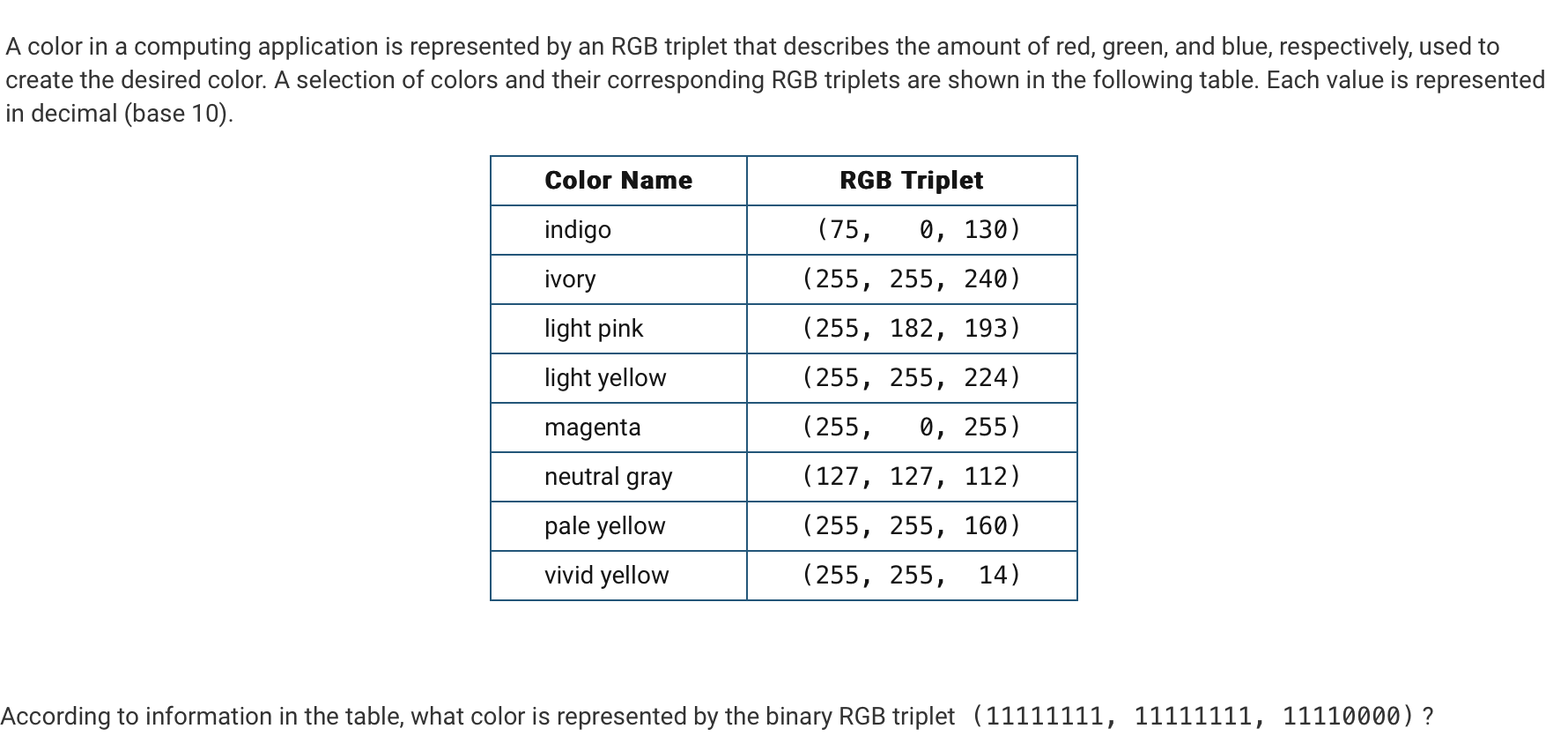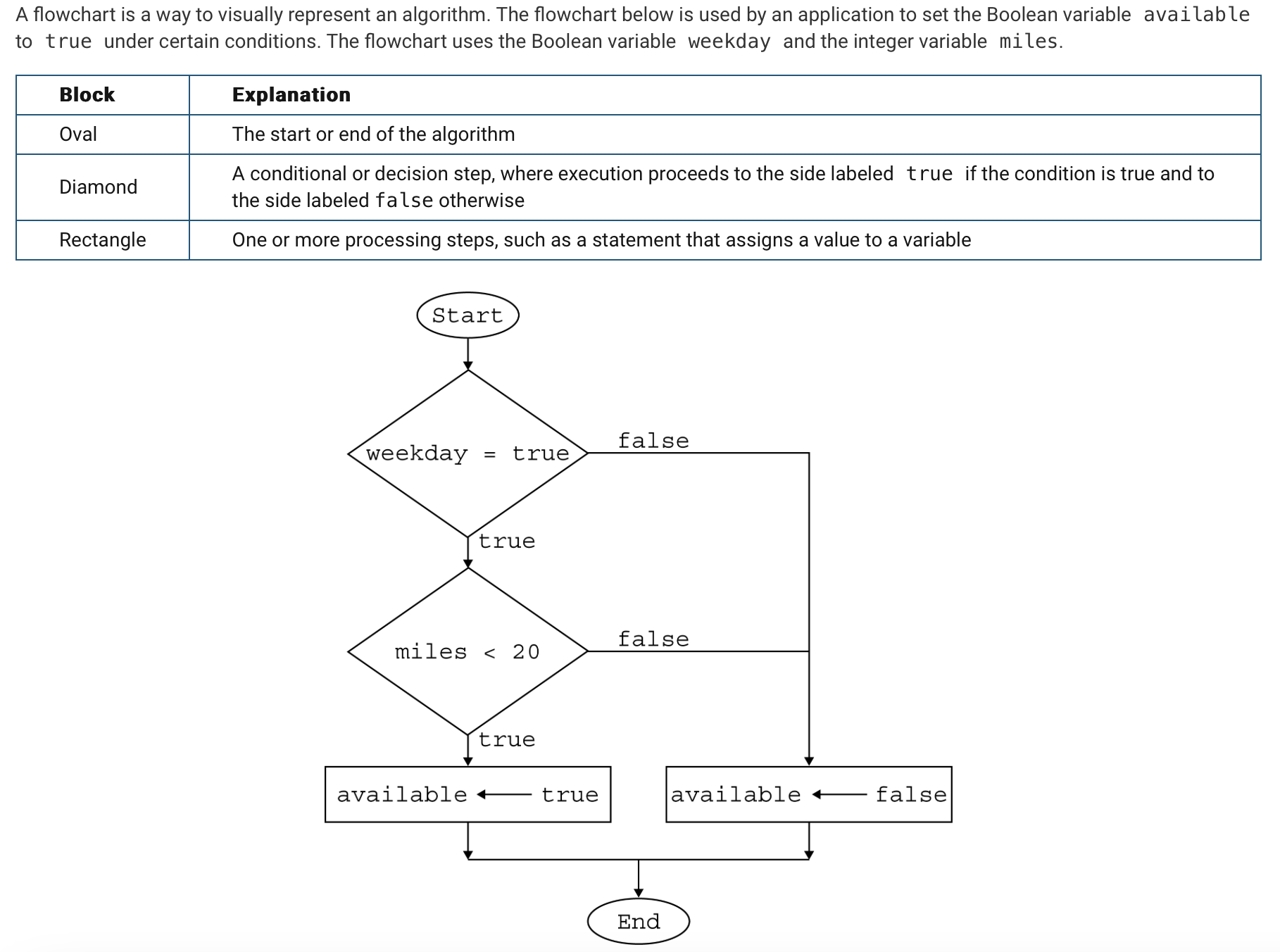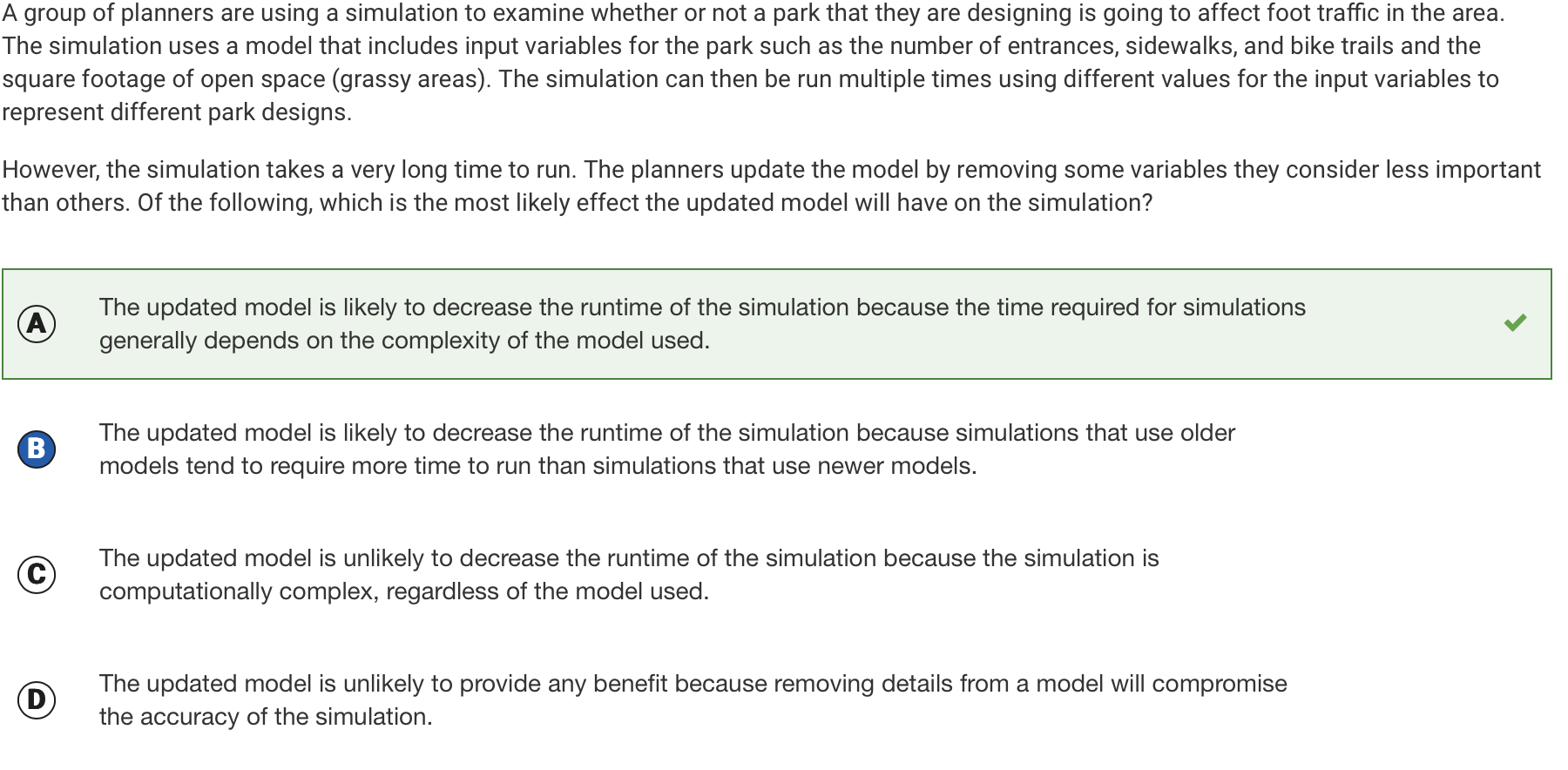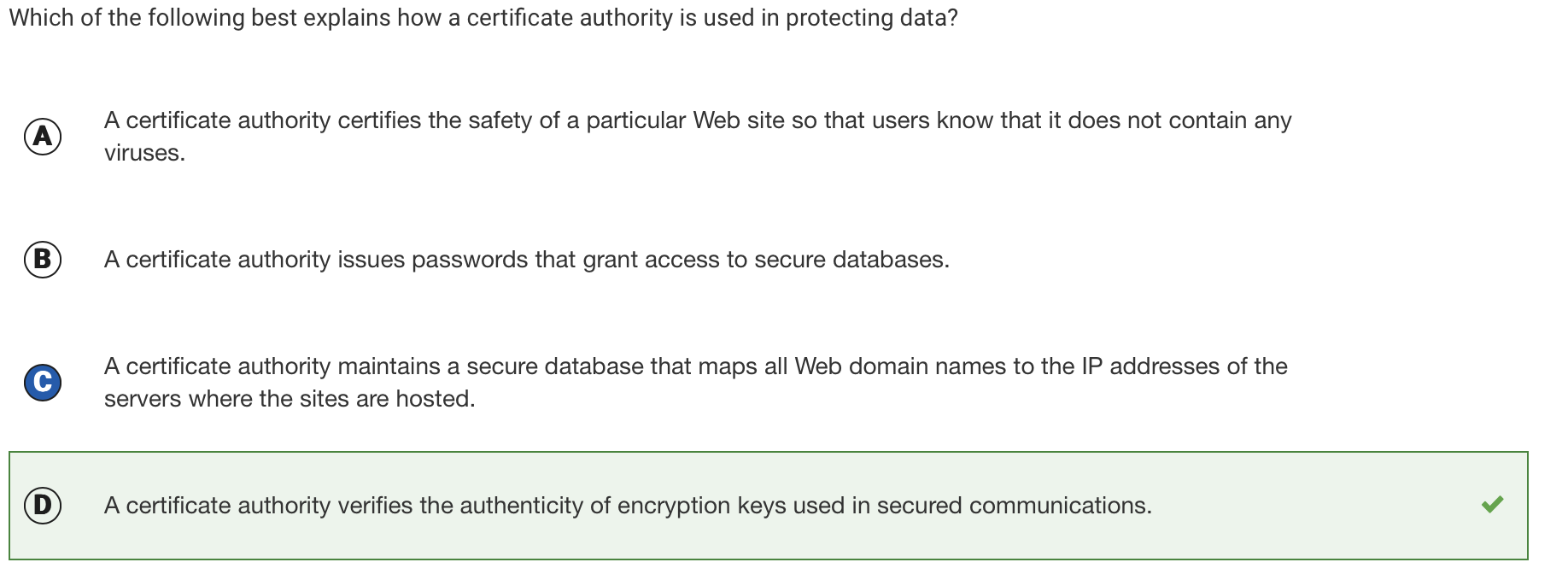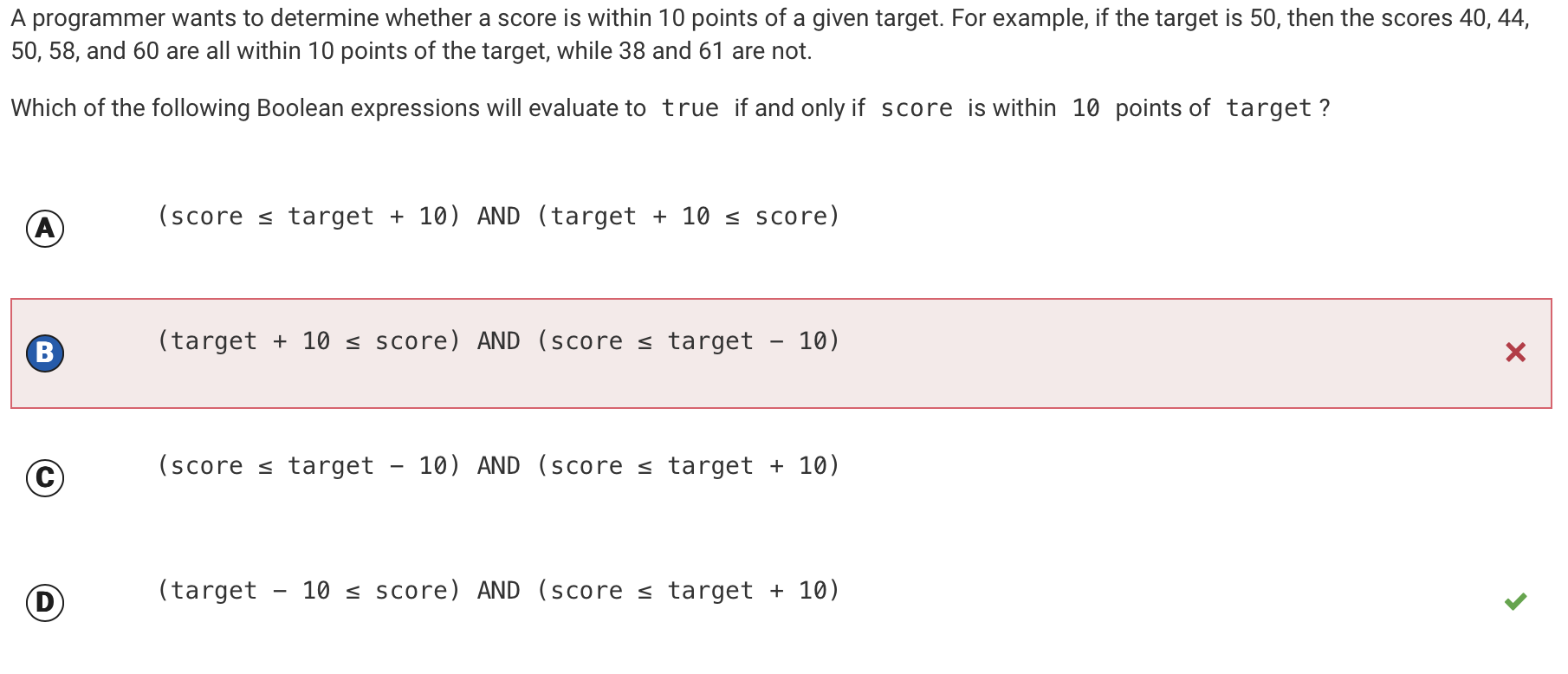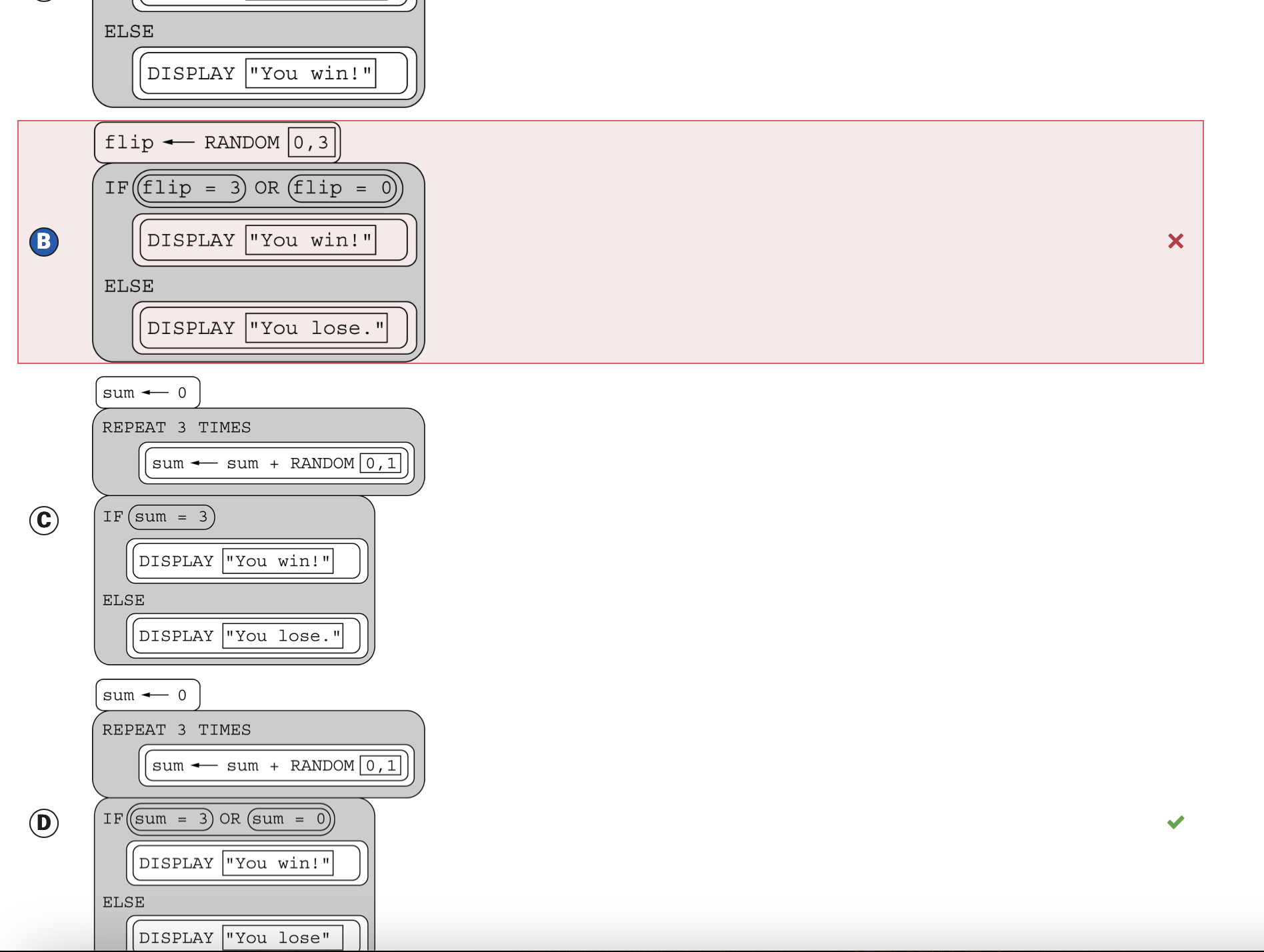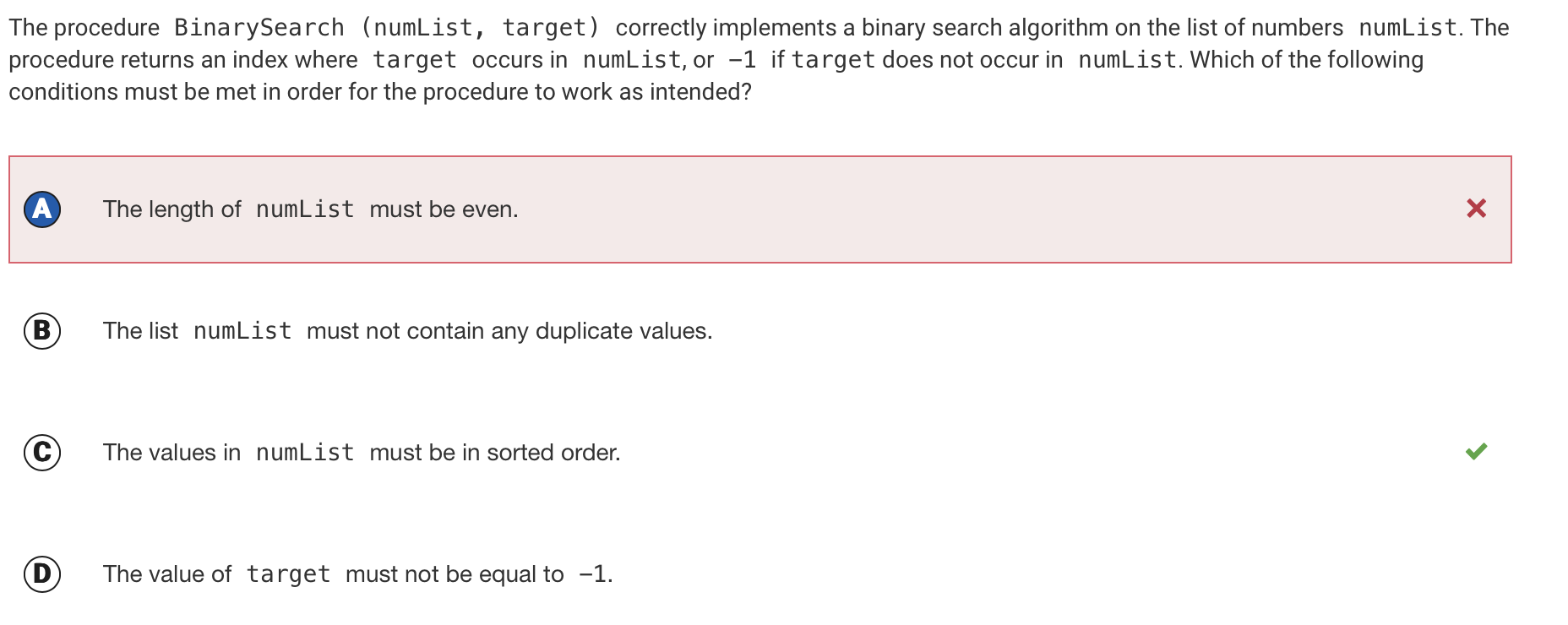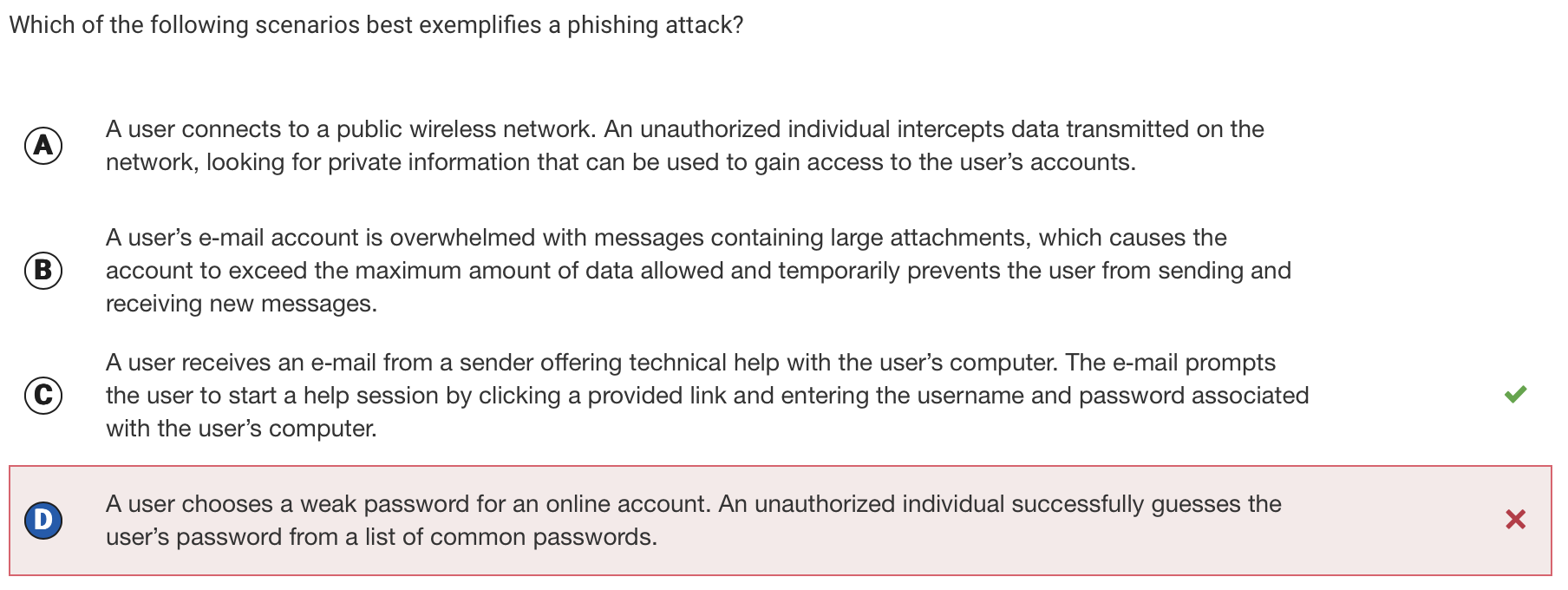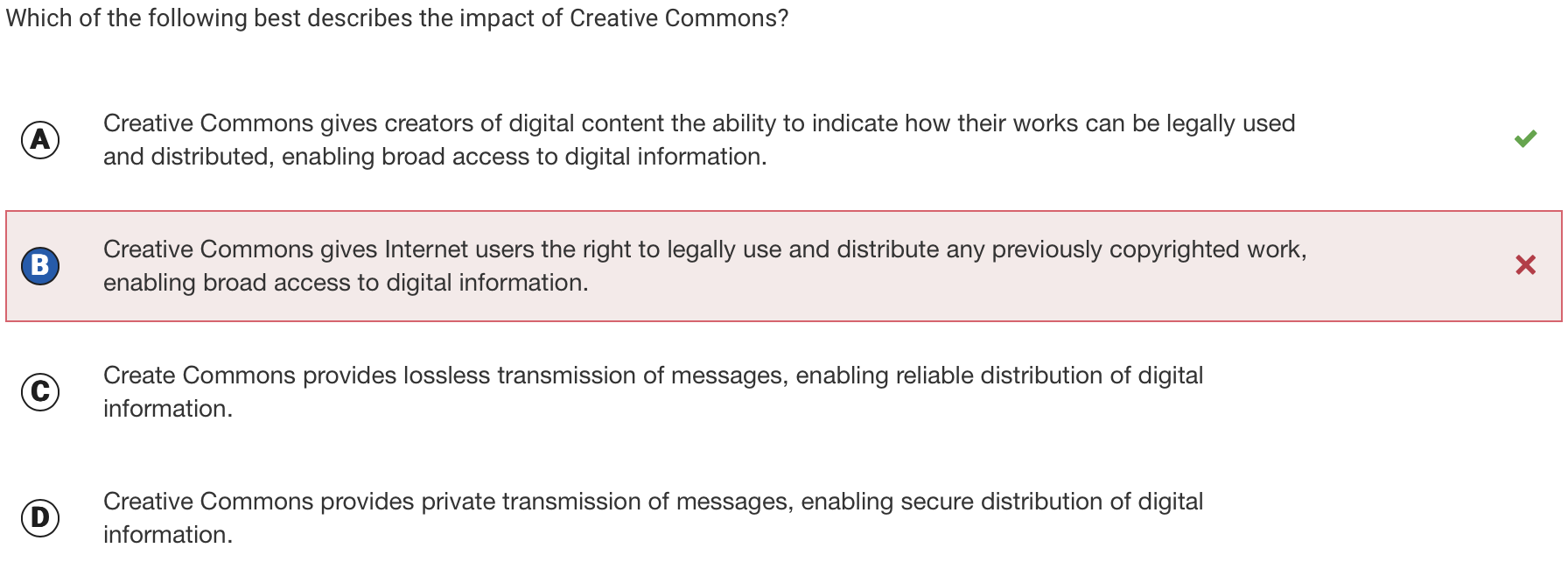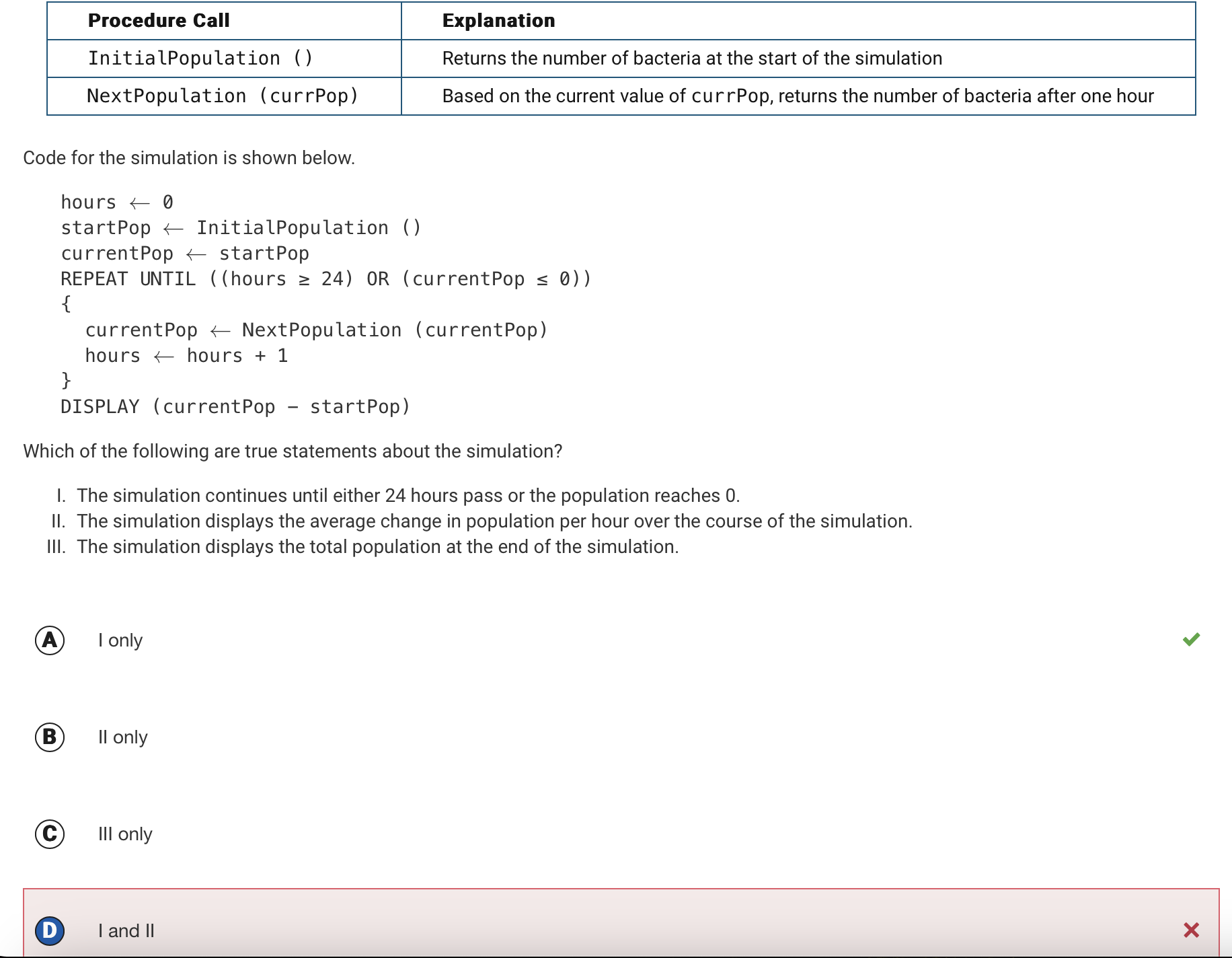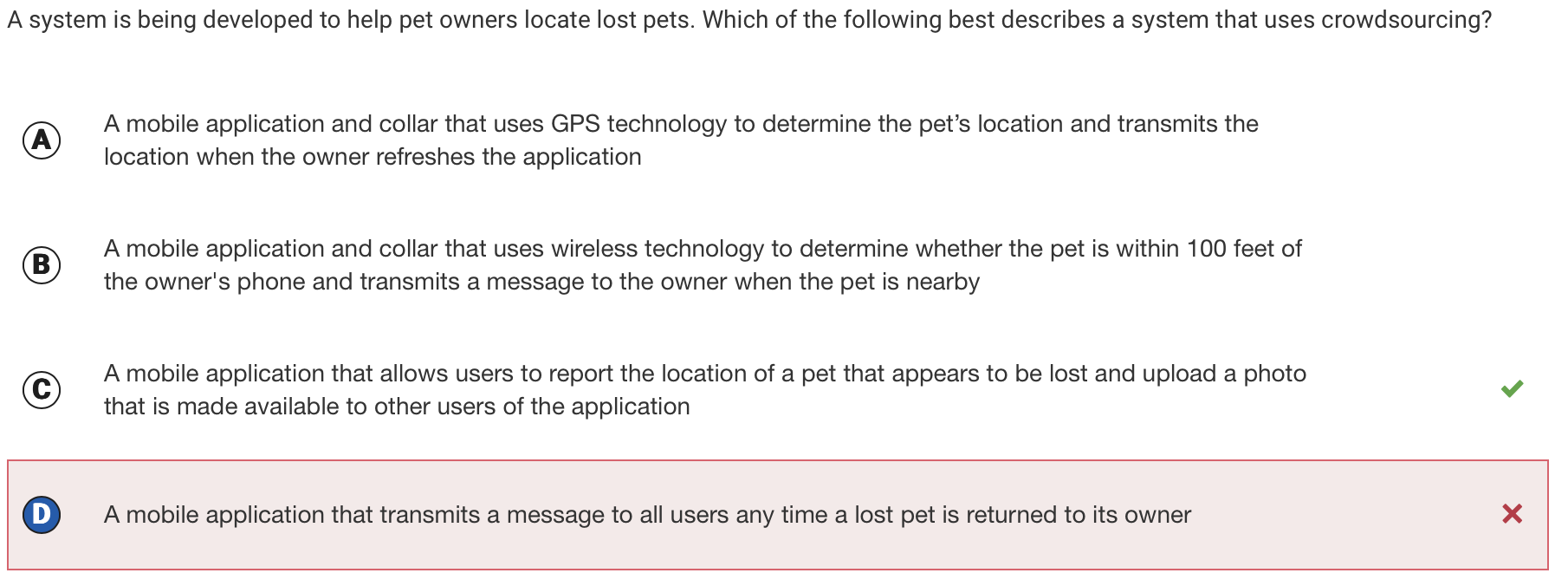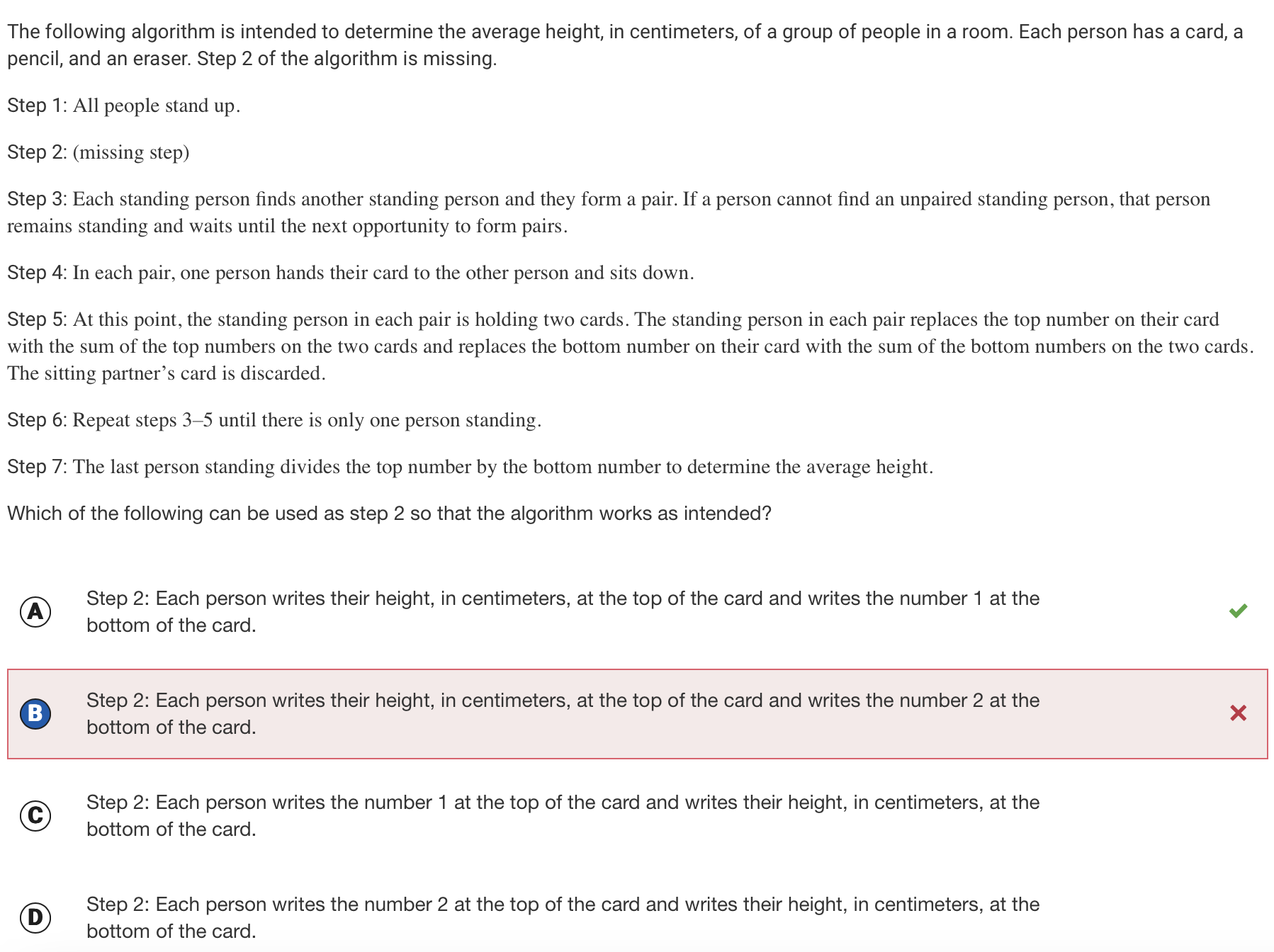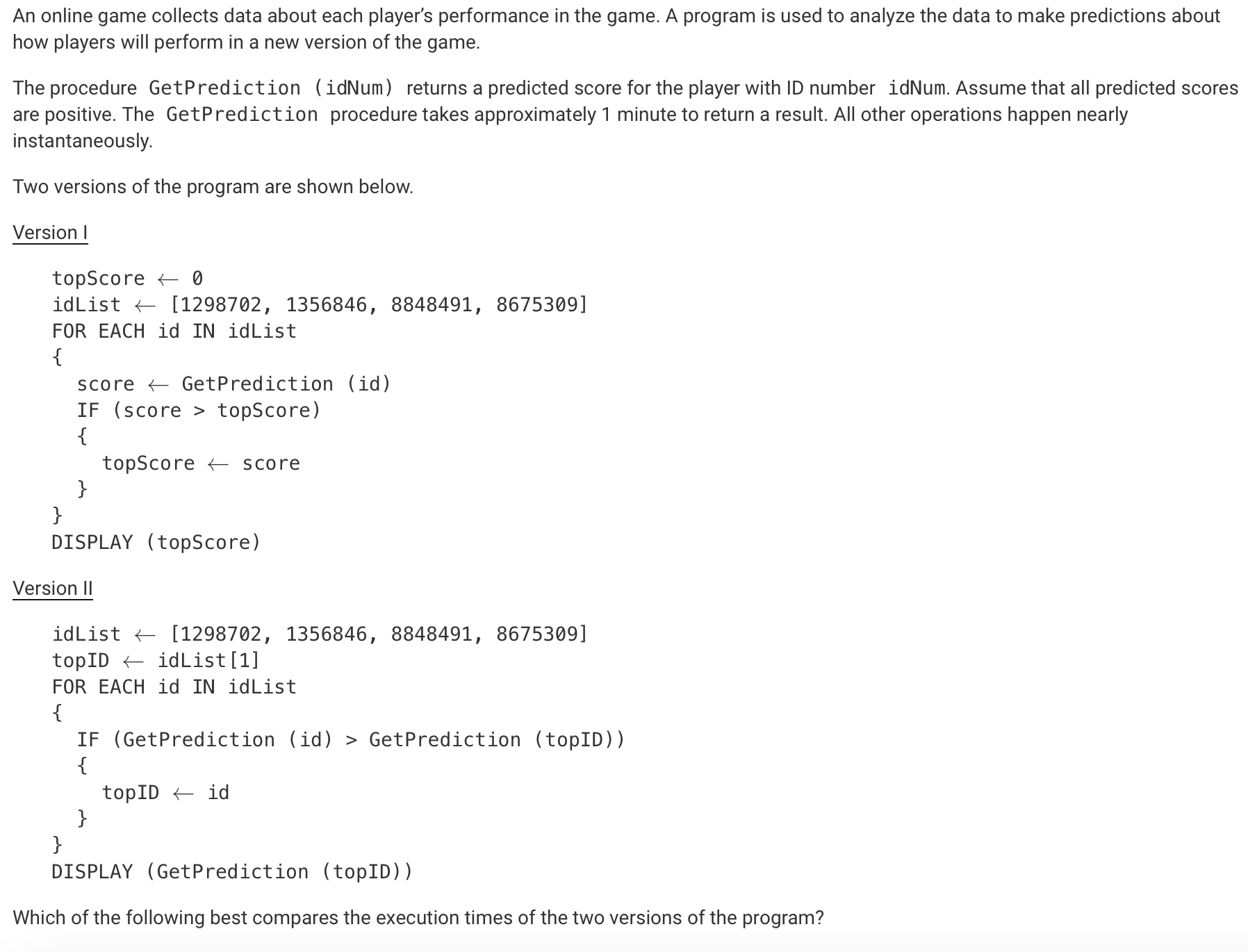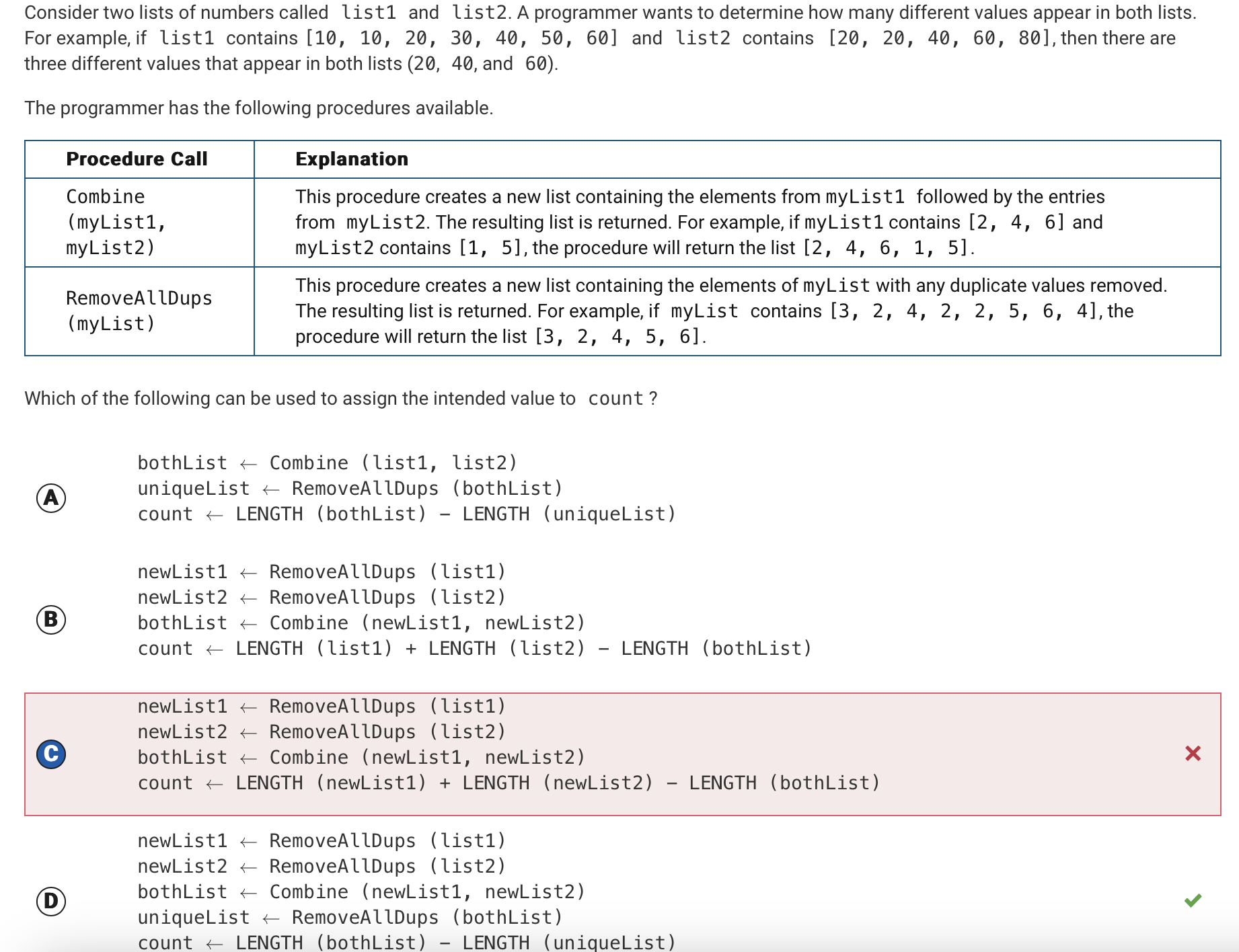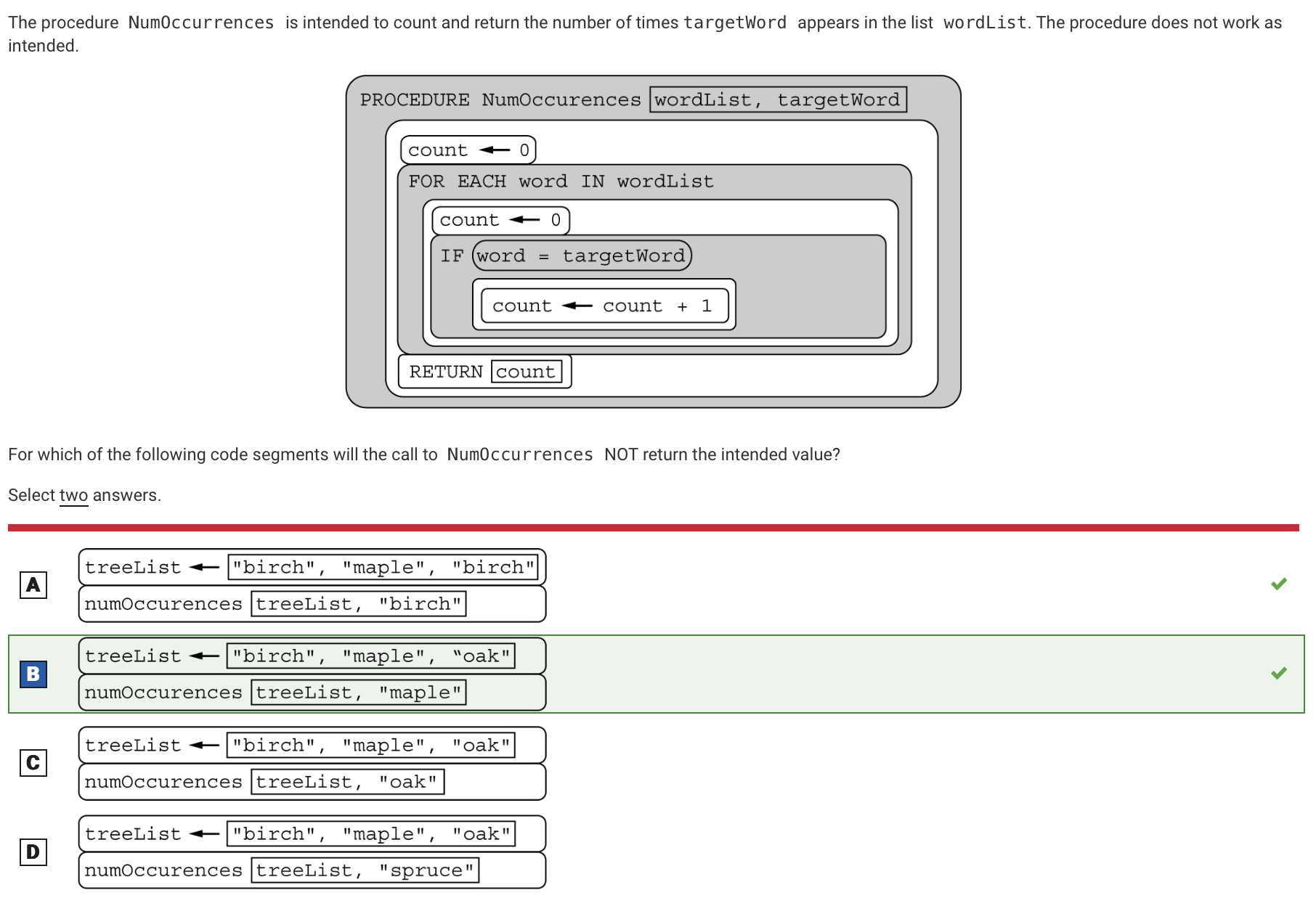Question 11:
- Answered: B (Light Yellow)
- Correct answer: A (Ivory)
- Explanation: 11110000 -> 240 not 224
Question 23:
- Answered: B (available <– weekday AND miles >= 20)
- Correct answer: D (available <– weekday AND miles < 20)
- Explanation: This expression (B) would be equivalent to an algorithm that sets available to true whenever weekday is true and miles is at least 20. The algorithm in the flowchart requires both conditions to be true in order to set available to true.
Question 36:
- Explanation: Whether the model is older or newer is not related to the amount of time it will take to run a simulation, therefore A is the right answer
Question 40:
- Explanation: Domain names are translated into IP addresses using the domain name system. This does not fall into the realm of activities performed by certificate authorities, which is why D is the correct answer.
Question 42:
- Explanation: This Boolean expression does not work as intended. For example, if score is 44 and target is 50, then (target + 10 ≤ score) evaluates to false and (score ≤ target - 10) evaluates to false. Therefore this Boolean expression will evaluate to false when it should evaluate to true. D is correct because the boolean expression is true if and only if score is between target - 10 and target + 10, inclusive. Therefore, it evaluates to true if and only if score is in the desired range.
Question 44:
- Explanation: While it is possible to disconnect computers U and T by removing four connections, it can be done by removing only two connections, if the connections between U and V and between U and P were removed, then computer T and computer U can no longer communicate.
Question 45:
- Consider a game in which a player flips a fair coin three times. If all three coin flips have the same result (either all heads or all tails) the player wins. Otherwise, the player loses. Which of the following code segments best simulates the behavior of the game?
- Explanation: In this code segment (B), the variable flip is assigned one of four values: 0, 1, 2, or 3. The player wins approximately two out of every four times (when flip is 0 or 3).
Question 46:
- Exlpanation: All Internet-connected devices are assigned an IP address. Certificate authorities are used to validate encryption keys.
Question 47:
- Explanation: A binary search will work on any sorted list, regardless of whether the list contains an even or odd number of elements.
Question 48:
- Explanation: Guessing a user’s weak password from a list of common passwords does not require the user to be tricked into providing personal information. Phishing is a technique that is used to trick a user into providing personal information.
Question 51:
- Explanation: The benefits of Creative Commons are limited to works that are published with a Creative Commons license. Previously published works are subject to traditional copyright rules.
Question 52:
- Explanation: Statement II is false. The simulation displays the change in population over the entire course of the simulation. The REPEAT UNTIL loop terminates when hours is at least 24 or currentPop is at most 0. Statements II and III are false. The simulation displays the change in population over the entire course of the simulation.
Question 53:
- Explanation: This system sends a message to many individuals, but does not enlist their help in finding a lost pet, wheras C uses an application to enlist the services of a large number of people to help find a lost pet.
Question 55:
- Explanation: By starting the process by writing a height at the top of the card and writing a 2 at the bottom of the card, the algorithm will work such that the last person’s card will have the sum of the heights at the top and two times the number of people at the bottom. Dividing the top by the bottom will give half the average height instead of the average height.
Question 56:
- Answered: B (Version 1 requires 5 more minutes to execute than version 2)
- Correct anwser: D (Version 2 requires 5 more minutes than version 1)
- Explanation: Version I calls the GetPrediction procedure once for each element of idList, or four times total. Since each call requires 1 minute of execution time, version I requires approximately 4 minutes to execute. Version II calls the GetPrediction procedure twice for each element of idList, and then again in the final display statement. This results in the procedure being called nine times, requiring approximately 9 minutes of execution time.
Question 60:
- Explanation (From collegeboard): For example, assume that list1 contains [10, 10, 20, 30, 40, 50, 60] and list2 contains [20, 20, 40, 60, 80]. The first line of code creates newList1, which contains [10, 20, 30, 40, 50, 60]. The second line of code creates newList2, which contains [20, 40, 60, 80]. The third line of code creates bothList, which contains [10, 20, 30, 40, 50, 60, 20, 40, 60, 80]. The fourth line of code assigns to count the length of newList1 (6) plus the length of newList2 (4) minus the length of bothList (10), producing the incorrect result 0.
Question 64:
- Explanation: C is wrong because for these values, the procedure repeatedly adds -2 to result five times, resulting in the intended product -10. B and are correct because since y is initially negative, the loop condition count ≥ y is initially true, so the body of the loop is never executed and 0 is returned.
Question 67:
- Explanation: A is also correct because for that code segment, count is increased to 1 the first time “birch” is encountered in the list. However, count is reset to 0 when the code segment moves to the next list element. The last time “birch” is encountered in the list, count is again increased to 1, causing the procedure to return 1 instead of the intended result 2.
Takeaways/Learnings from the quiz
I learned that throughout the quiz I’ve had a harder time with these concepts, therefore I should review and study them more than others
- Safe computing
- Crowdsourcing
- Legal and Ethical Concerns
- Fault Tolerance
- Random Values
- Simulations
- Algorithmic Efficiency
- Iteration
- Boolean
- Identifying and Correcting Errors
Ways to Study:
- Review Team Teaches
- Chat GPT
- Practice Tests
- Check Older Team Teaches
- Watch Related Videos
- Read Multiple Sources
- Ask Teammates For Help/Advice
Final Quiz Reflection
- Overall, I am not too happy with my score (49/67), however, this will help me grow from my mistakes and help me focus up and improve on topics I have more trouble with. To review and study, I will utilize previous team teaches and watch youtube videos that explain how each of these topics works and what collegeboard expects you to know about them. In general though, I feel like I learned many new things so I am happy with my progress and growth throughout this trimester and especially this class. I finally got the chance to have a new team, so hopefully my new teammates will be able to support me and help me improve my flaws and weaknesses in this class.
